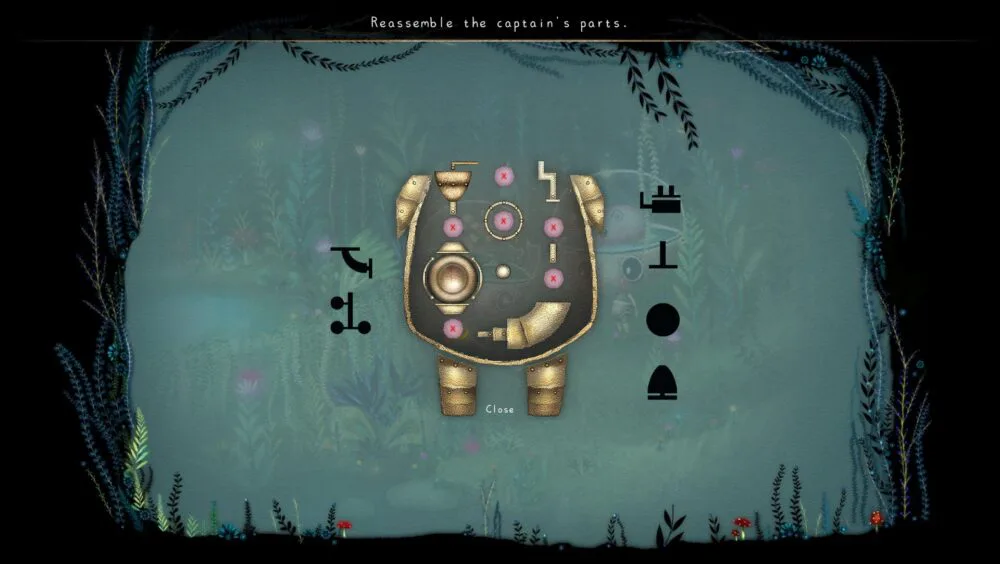Growbot, developed by Wabisabi Play, is the passion project of illustrator Lisa Evans and it shows. It’s a classic point-and-click adventure, set on an asteroid space-station inhabited by “growbots”, peculiar robot-organic hybrids that assisted the original geologists manning the station. Standing out in a crowded indie genre is tough, but Growbot’s fairy-tale visuals and peculiar character designs are impressive. You take the role of Nara, a young Growbot training to become a captain, as she attempts to save the station from a crystalline invasion that could destroy all organic life onboard.
As with so many modern point-and-click adventures, the controls and user-interface are a far cry from the cluttered and visually overwhelming mess of many classic titles. You left-click to move, inspect items, or engage with other characters. Useable objects for puzzle-solving are on the right of the screen; while your guidebook, hint-spewing “Brainapilla” (literally a disembodied brain that sits in your dome helmet), and other important documents are on the left of the screen. You can right-click to examine objects and simply drag-and-drop items to use them. It took no time to get to grips with the interface and get on with exploration and puzzling.

The environments and characters, despite the blend of robotic and organic components, have a classic fairy-tale quality to them. They can get a little cluttered at times, but the mouse cursor changes to let you know what you can interact with, limiting the amount of pixel-hunting you’ll need to do.
Growbot’s core gameplay is traditional in design but mixes it up by asking the player not only to collect and combine key item, but also to observe, read, and talk to other characters to find the solution to the numerous problems on the station. An early puzzle that asks you to reconnect another growbot can be brute-forced, but you could also check your guidebook on the origins of the growbots and find an image of their internal components. Keeping with the floral themes, you can collect seeds, grow, and combine flowers to solve other puzzles.

You’ll find plenty to read in Growbot. These details not only flesh out the world and characters within it, they also provide text- and image-based clues for the puzzles you’ll encounter.
Going back to the presentation, Growbot looks and sounds incredible. With stylised designs, charming animation, and hand-illustrated environments, the world looks like it was pulled straight from the pages of a fairy-tale. The unobtrusive user interface ensures you’re not distracted from the visual splendour. There’s no voice work, but the ambient audio and music (created by musician Jessica Fichot) does a great job of creating an otherworldy and magical atmosphere.

Puzzles tend to be more involved than the classic “use item on object” approach.
The Growbot demo was brief and traditional with regards to gameplay, but outstanding when it comes to an audiovisual experience. As such, don’t go into Growbot expecting a radically different point-and-click experience, but rather a unique, nature-themed adventure, packed with involved puzzles and some flower-growing on the side. The final release will have you trekking across the station to repair a myriad of systems, interacting with different plants and alien species, to save it from the crystalline invaders.
You can wishlist Glowbot on steam here.
This first look was written by Andrew logue one of our Freelance writers.
Did you enjoy reading our preview of a game before the game gets its final release and its final version? if yes, click here to find more early previews.
Cloud Gardens

In Cloud Gardens players must harness the power of nature to overgrow lo-fi scenes of urban decay and manufactured landscapes. By planting seeds in the right places, they’re able to create small overgrown dioramas of brutalism and beauty, salvaging and repurposing hundreds of discarded objects to create unique structures for nature to reclaim.
Product In Stock: SoldOut

You must be logged in to post a comment.